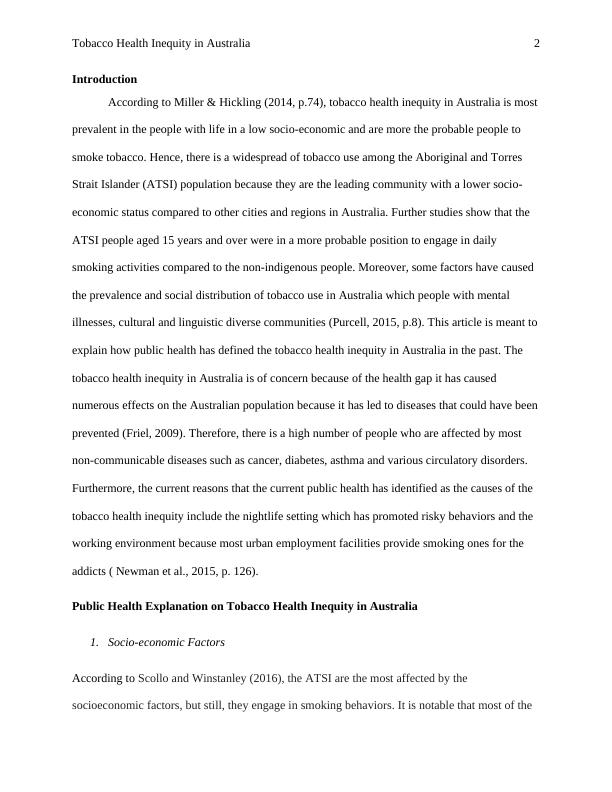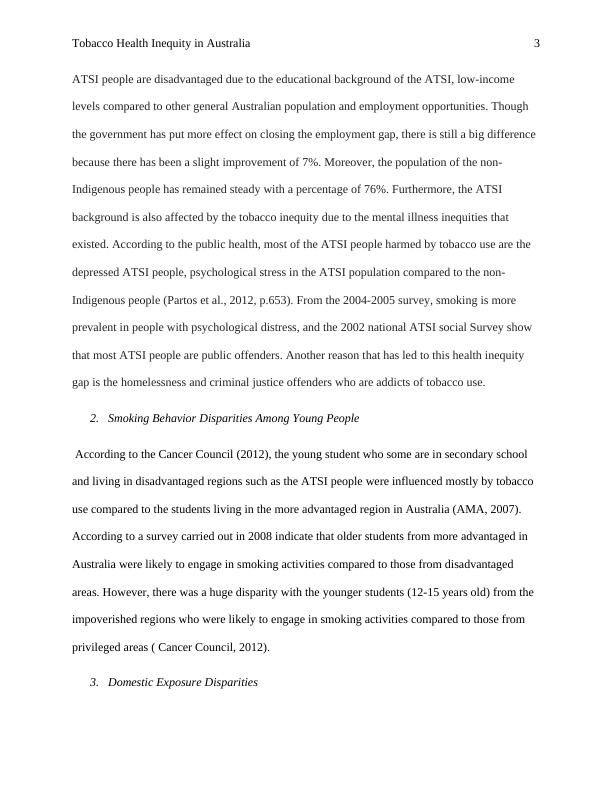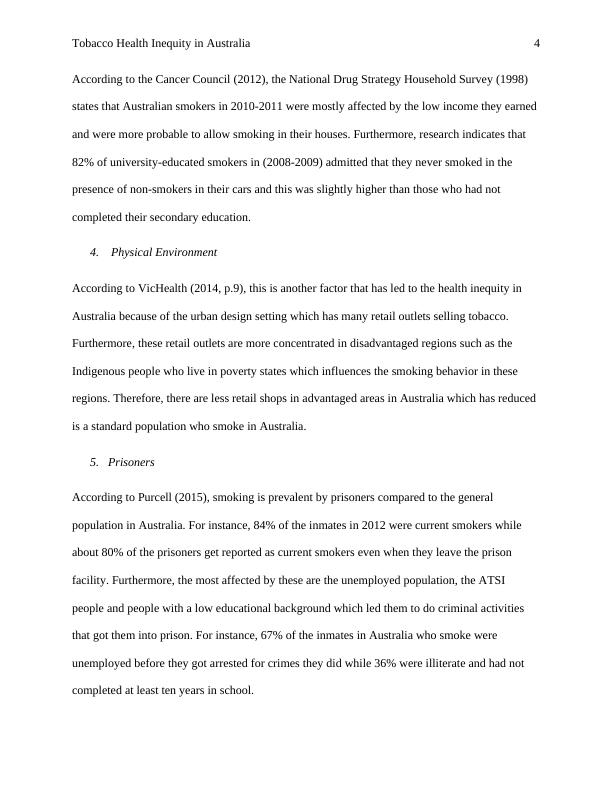Tobacco Health Inequity in Australia
12 Pages3617 Words247 Views
Added on 2023-06-11
About This Document
This article explains the prevalence and social distribution of tobacco use in Australia, and how public health has defined the tobacco health inequity in Australia in the past. It covers various factors that have led to the health inequity gap, including socio-economic factors, smoking behavior disparities among young people, domestic exposure disparities, physical environment, prisoners, exposure to second-hand smoke disparities, impact on the life course perspective, prevalence of smoking among pregnant women, and prevalence of smoking among health workers. The article also discusses the current public health explanation on tobacco health inequity in Australia, including smoking and social disadvantage, cultural and political factors that influence tobacco health inequities in Australia, daily living, and early childhood and education.
Tobacco Health Inequity in Australia
Added on 2023-06-11
ShareRelated Documents
End of preview
Want to access all the pages? Upload your documents or become a member.
Health and Society Assessment 3: Smoking and Inequity Among Indigenous Australians
|8
|1738
|368
Reasons for Inequity in Cardiovascular Disease
|9
|2525
|82
Health Inequalities in Australia: Causes and Solutions
|7
|1712
|248
Health Inequalities in Australia: Causes, Effects and Solutions
|11
|2504
|247
ABORIGINES AND TORRES STRAIT ISLANDER ARTICLE 2022
|14
|3510
|41
Understanding Indigenous Health Perspectives: Alcoholism, Risks, and Impacts in Australia
|7
|1612
|149




